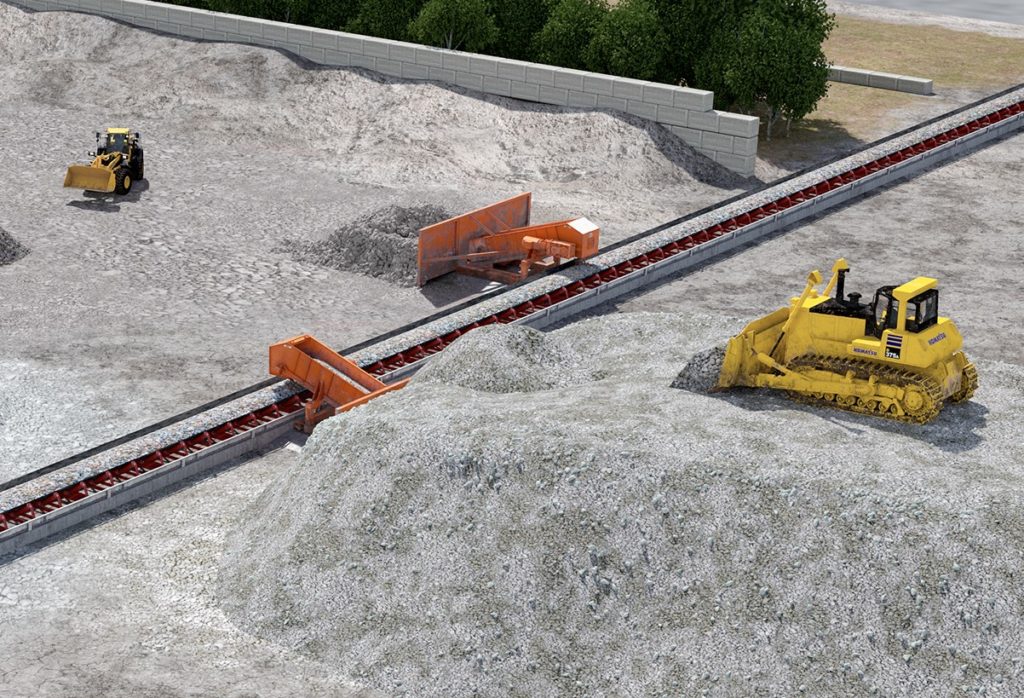Komatsu launched a new reclaim feeder model, the Stamler RF-5, at the 2020 CONEXPO-CON/AGG show in Las Vegas earlier this year. Reclaim feeders are a type of chain feeder that transfers material from a stockpile and meters it on to a belt conveyor. The stockpile can be created by a belt conveyor, wheel loader or with a truck dump. Reclaim feeders can also work in a dozer trap configuration.
With minimal civil work required for set up, reclaim feeders offer a low installation cost, typically sitting on the ground. They can be easily relocated to be used where most needed, not requiring any special equipment to relocate. They provide an operational flexibility by being able to be dragged into position with dozers.
John McCarthy, Komatsu Mining Product Manager for Double Roll Crushers told IM: “Coal or cement operations, which sell multiple grade products, often use multiple reclaim feeders to blend the products on the belt. They are a low-cost option to back-up bucket wheel reclaimers in a heap-leach application. They can also be utilised in ports for barge and ship loading. More than 500 reclaim feeders have been supplied to date with capacities ranging from 500 to 4,000 tons per hour.”
To maximise productivity, the fully enclosed, sandwich belt High-Angle Conveyor (HAC) from Komatsu is capable of elevating high tonnages of material at steep angles, up to 90 degrees. Komatsu recently commissioned its 164th HAC system.
Sandwich belt high-angle conveyors incorporate all-conventional conveyor hardware, including smooth cover belting, to provide a very reliable, low-maintenance system with demonstrated high availability. Utilising the same components, they inherently share the same benefits associated with highly efficient, lower-risk, conventional belt conveyors. Faster removal of material at higher tonnage rates, continuous haulage, conveying irregular-shaped spoil with moisture content ranging from dry to very wet, has now been proven numerous times by using vertical sandwich belt technology.
Capacities of more than 4,500 t/h and lifts greater than 175 m have been achieved. “The use of a simple, yet effective, spring-loaded pressing device provides the proper amount of hugging pressure required to produce the right amount of friction between material and the belt, and the internal friction of material on material to help prevent slide back from occuring when designed per customer-supplied criteria. This gentle hugging pressure is also considered self-regulating as the amount of pressure applied to the belts is dependent on the depth of material being conveyed. As the bed depth increases, so does spring compression, thereby introducing more pressure on the belts. Komatsu is now incorporating their sizer product in their HAC systems to crush the material to a cubic, conveyable size.”











